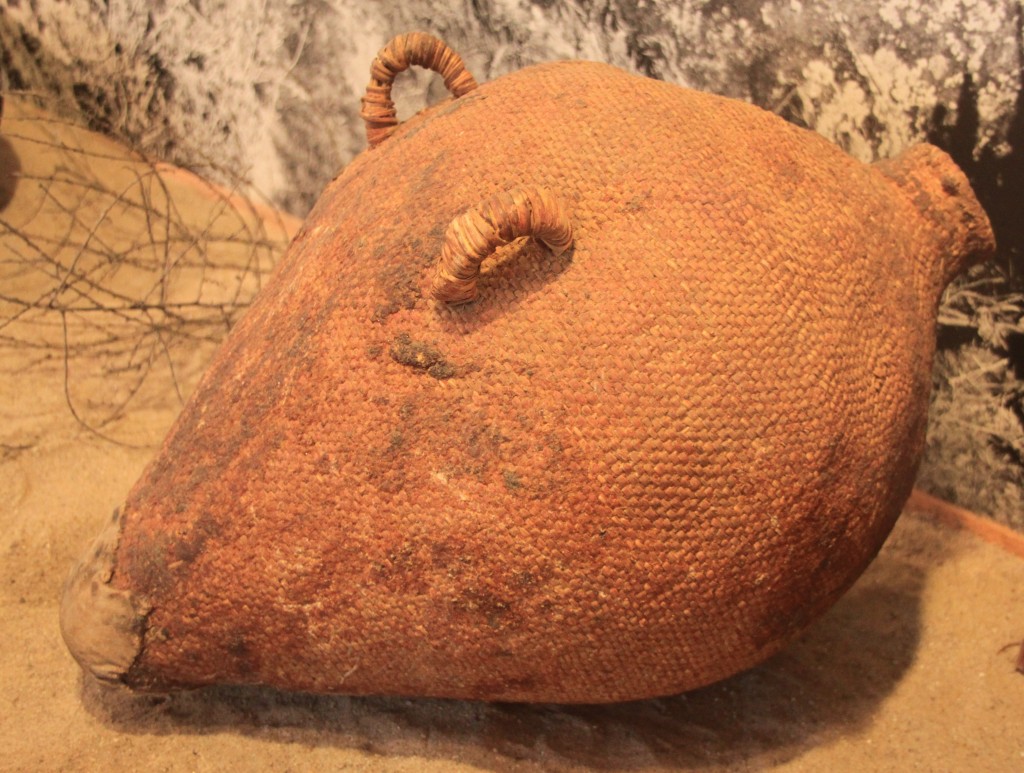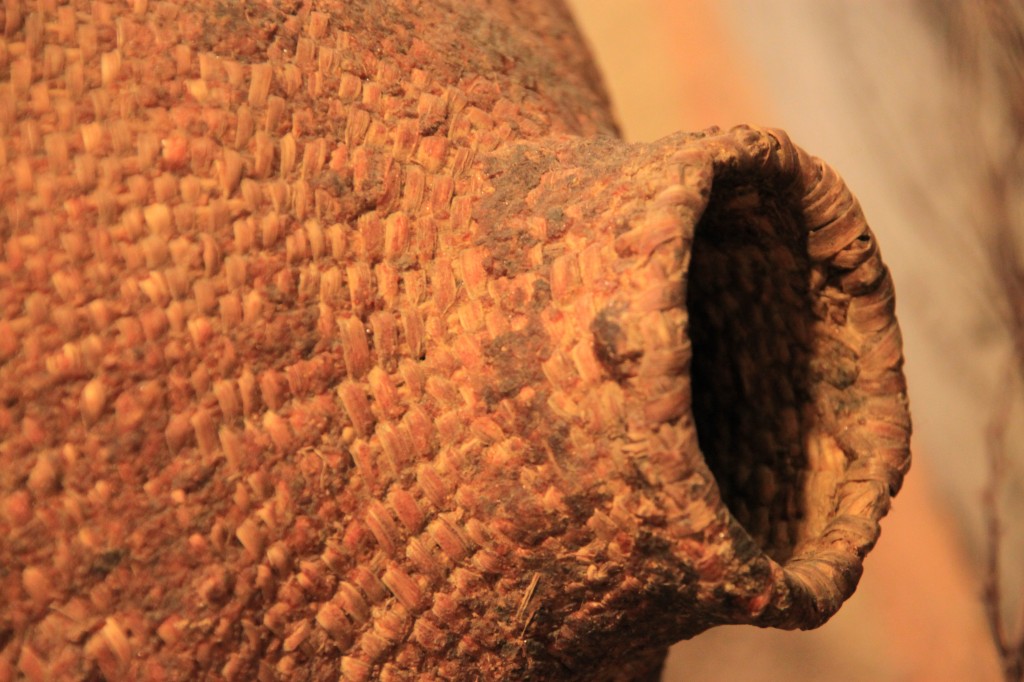These woven jugs originated in Arizona through the necessity of carrying water to support a nomadic life style. The shape of this woven bottle is derived from gourds which were originally used as water containers. Gourds were fragile and were eventually encased with yucca leaves or flexible willow. The weaves went from a rudimentary case to a strong protective cover with the use of the simple weave. With a round coiled start and a self-coiled rim finish, these coarse water jugs were firm and durable and the simple weave produced a symmetrical shape.(1) Gourds were discontinued with the use of pinion gum, or pitch, for water proofing. Pitch was also used for repairs.
The Havasupai Water Bottle reached the Nez Perce women in the Great Basin through trade. This style of woven water jugs were widely used by the South West and Great Basin culture areas. The jugs were used by Nez Perce women in transitions from 1877 to 1990 for gathering water to support their family. The Great Basin tribes used bear grass for their version of the Havasupai Water bottle. It was common practice for women to decorate these woven water bottles for trade, providing a source of sustenance, or gifts, aiding in intercultural relations. If there were no designs, the use was strictly utilitarian.(2)
1. Turnbaugh, Sarah P., and William A. Turnbaugh. Indian Baskets. Atglen, PA: Schifter Publishing, 2004.
2. James, George Wharton. Indian Basketry. New York: Doves Publications, Inc., 1972.
Photos provided by Idaho State Historical Society:
Water Jug (804.55)

